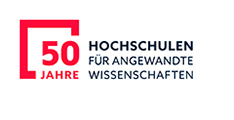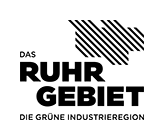Additive manufacturing, also referred to as 3D printing or AM, comprises a range of manufacturing processes that facilitate the direct production of complex components from computer models. The material under consideration is generally implemented in a step-by-step and layer-by-layer manner, thereby affording enhanced design freedom and the fabrication of intricate geometries that are notoriously challenging or unfeasible to produce through conventional machining techniques such as milling.
Additive manufacturing has undergone rapid development in recent years. In addition to a multitude of new processes, some of which are highly specialized (laser, extrusion melting, lithography, laser deposition welding), the variety of materials used has also been significantly expanded. The utilization of plastics and metals is no longer the exclusive domain of 3D printing; advancements in technology have rendered it feasible to print with ceramics, composites, and biological materials.
Additive manufacturing has found application in numerous industries. In the field of aerospace engineering, the utilization of additive manufacturing to produce highly intricate, lightweight components has emerged as a pivotal strategy to minimize weight and fuel consumption. In the domain of medical technology, three-dimensional printing facilitates the fabrication of patient-specific implants and prostheses. The technology is also employed in the fields of automotive engineering, consumer goods industry, and mechanical engineering for the purposes of rapid prototyping and series production.
The social significance of additive manufacturing is increasing at a steady rate. This approach fosters innovation by empowering designers and engineers to expeditiously develop prototypes and implement concepts. This has the effect of accelerating development processes in a variety of industries. Moreover, 3D printing contributes to sustainability by reducing waste and enabling customized, durable products.
Despite the advantages of additive manufacturing, there are still some challenges that need to be overcome. Ensuring the consistency of component properties is of particular importance in the context of marketable products and mass production. The enhancement of process capability and the implementation of process monitoring through the integration of suitable sensors and automation facilitate the detection and correction of manufacturing errors at an early stage. The objective is to establish a reliable method for predicting the mechanical properties of the components. To achieve this objective, it is necessary to develop specialized simulation solutions that replicate the specific conditions of the respective printing process.
Moreover, the material utilized in AM processes has emerged as a pivotal area of research interest. The interaction between material properties, especially in different starting forms (filament, powder, resin), and the respective printing processes or the resulting component properties has not yet been sufficiently researched. Given the proliferation of available materials and the attendant diversification of the field, this research gap is of paramount importance for the advancement of additive manufacturing.
Research Topics
- Adhesion investigations FFF
- Heat transfer processes FFF / SLS
- Process-dependent component prediction FFF / SLS
- Coating process SLS
- Powder rheology investigation SLS
- Particle investigation / (microscopic) particle characterization
- Reusability strategies for recycled powders to increase sustainability
- Component investigations (surface profile / roughness)
- Production-oriented design FFF / SLS
- Digital foam lattice structures







